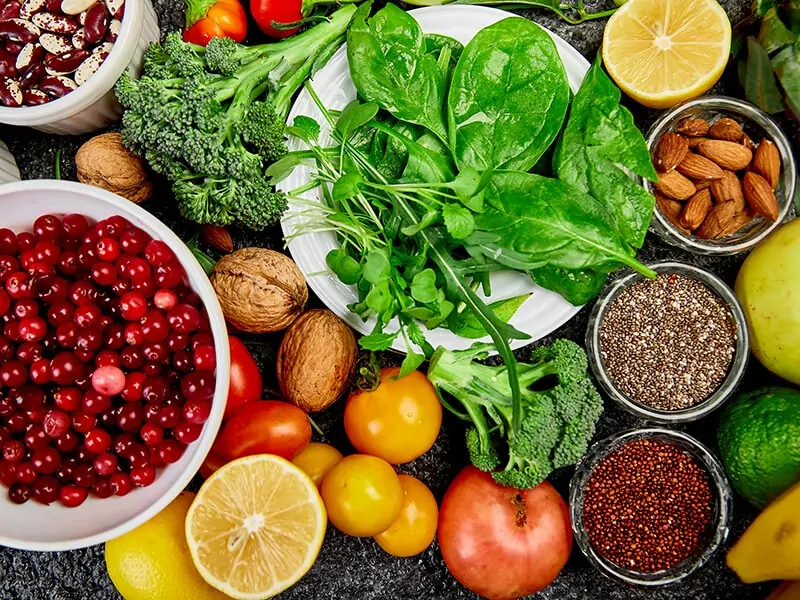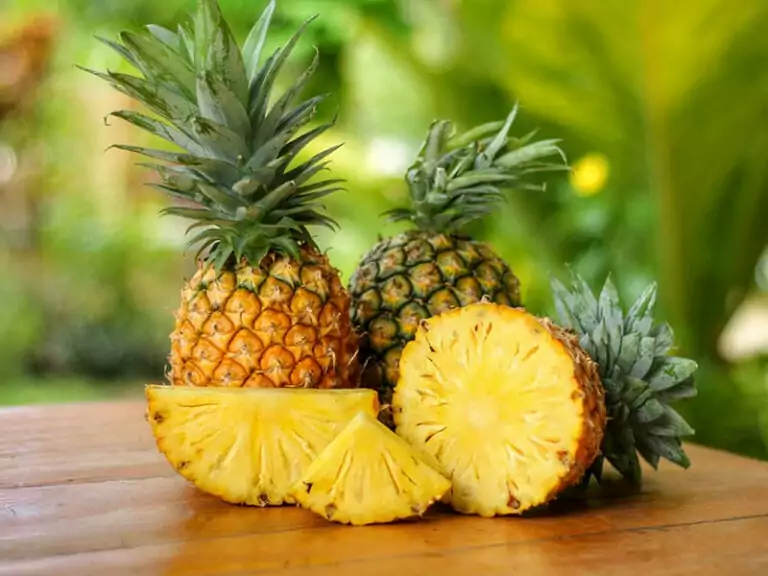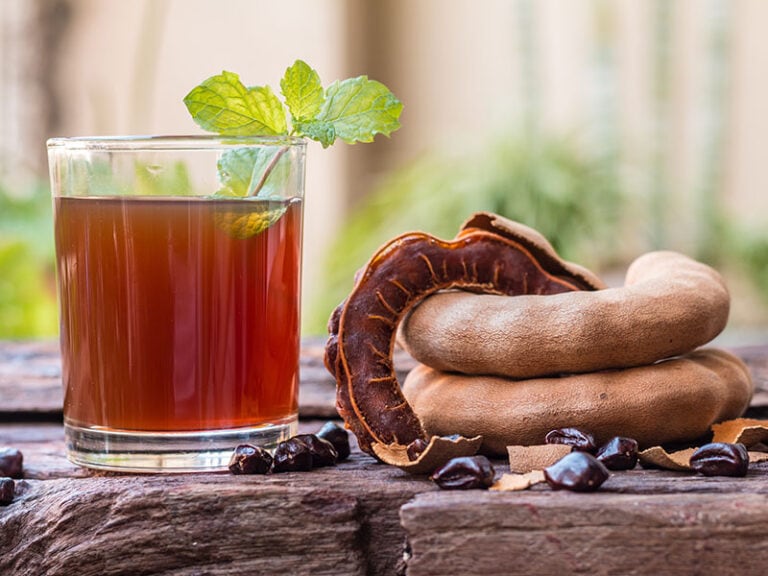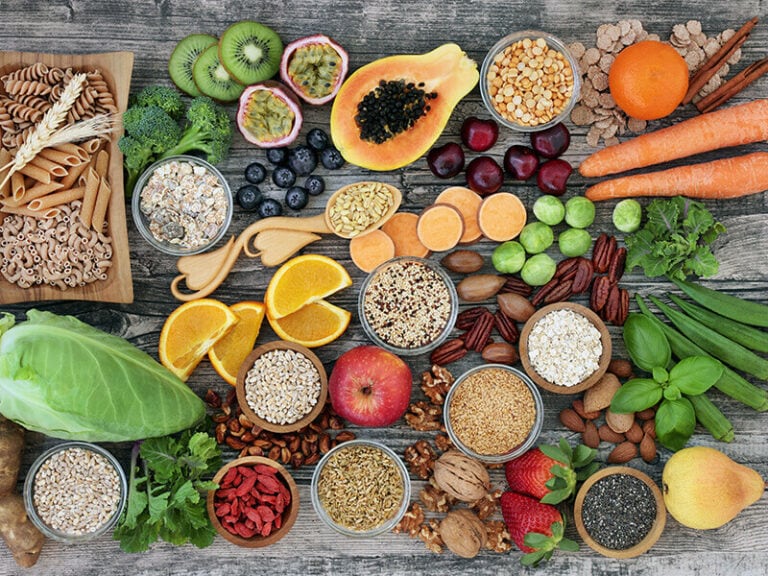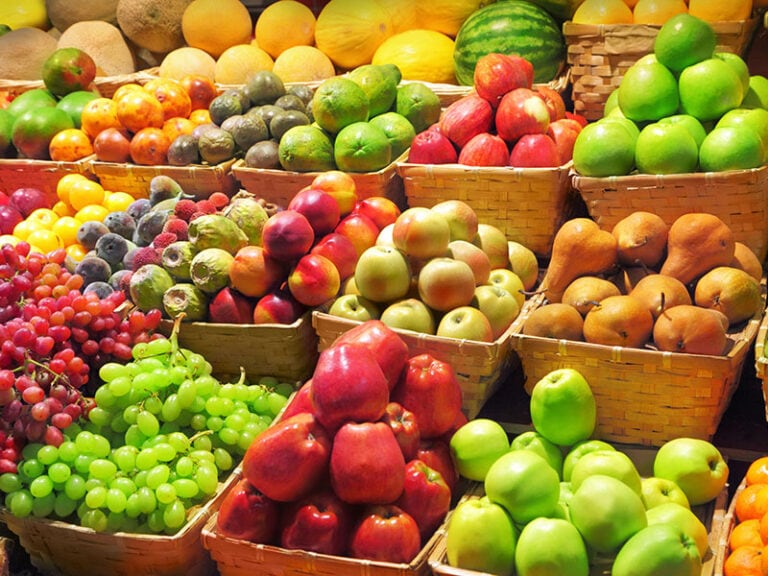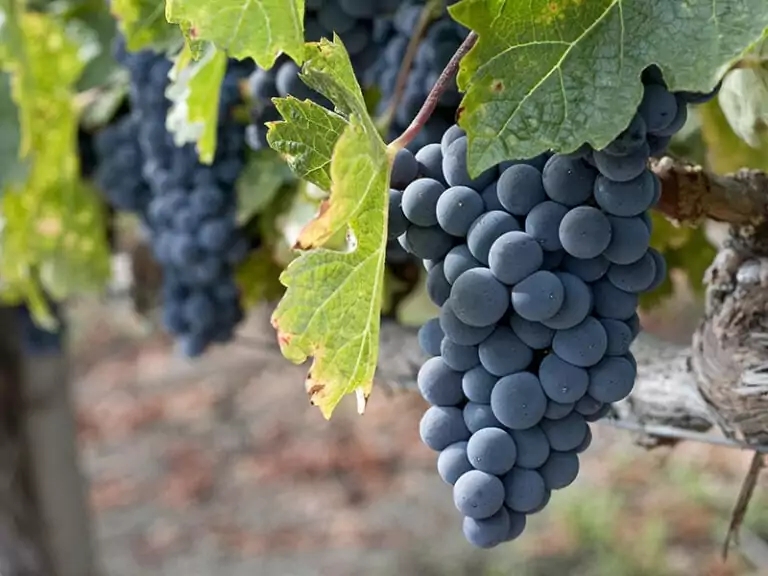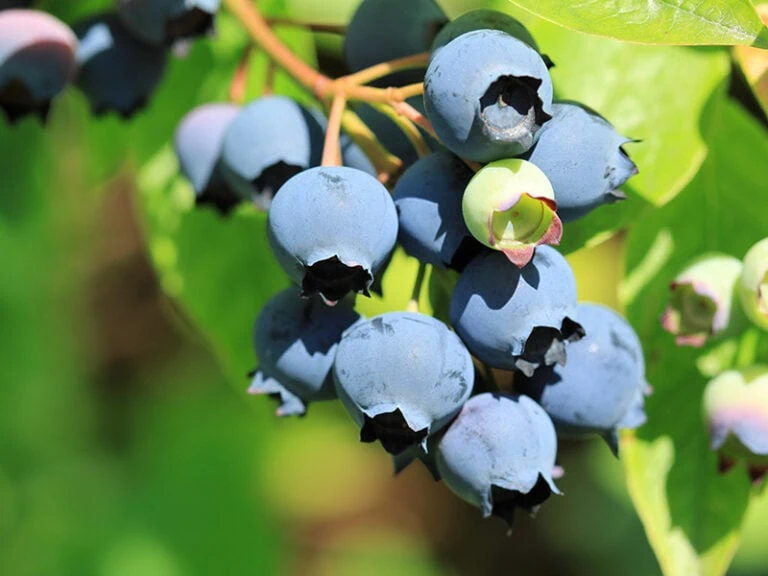When it comes to this topic, I do not firstly think of fruits and vegetables that start with X. There are not many common fruits having the names beginning with X, but when I try to discover them, it turns out that there are actually some of them existing in the world.
So, I am here to show you the list of some incredible X-Something fruits that may blow your mind away! Stay here in this post to find out what they are!
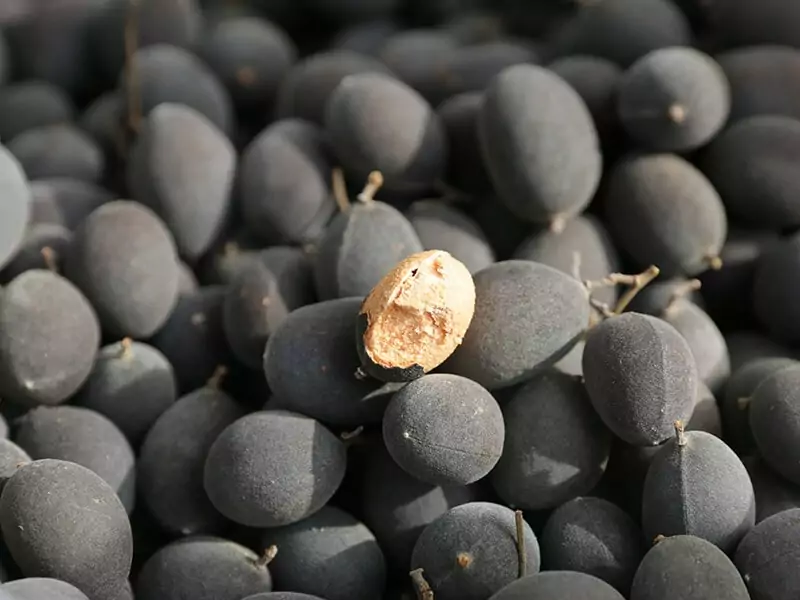
15 Amazing Fruits And Vegetables That Start With X
How many kinds of fruits and vegetables are there around the world beginning with X? I’m sure that there are a lot of them, but here in this article, I will show you more than 14 most spectacular fruits and vegetables starting with X that will amaze you!
Fruits
- Xanthium
- Xarel·lo
- Xiangjiao (“Banana” in Chinese)
- Xigua
- Ximenia Caffra
- Xinomavro
- Xing Zi (“Apricot” in Chinese)
- Xoài (“Mango” in Vietnamese)
- Xoay (“Velvet tamarind” in Vietnamese)
- Xoconostle
- Xylocarpus Granatum
Vegetables
- Xà Lách
- Xerophyte
- Xi Lan Hua (“Broccoli” in Chinese)
- Xi Yang Cai (“Watercress” in Chinese)
Now you have known all of their names, let’s come and learn more about each one of them!
11 Kinds of Fruits Beginning With X
Be ready because you may not believe that these names of fruits even exist in this entire world! Make yourself surprised by reading these following facts about 11 kinds of fruits that start with X.
1. Xanthium
Xanthium is actually another name for the cocklebur from North America and some parts of Asia. The fruit is yellow and consists of a scabrous and spiky look like a baby hedgehog.
This fruit is often used in Chinese medicine and has a specific name in Chinese, Cang Er Zi due to its color and shape. In Western countries, Xanthium can be used as a painkiller to reduce soreness and headaches brought by nasal congestion.
Xanthium is considered poisonous, according to some sources; however, the toxicity can be eliminated by rinsing the fruit in freshwater or exposing it to hot temperatures.
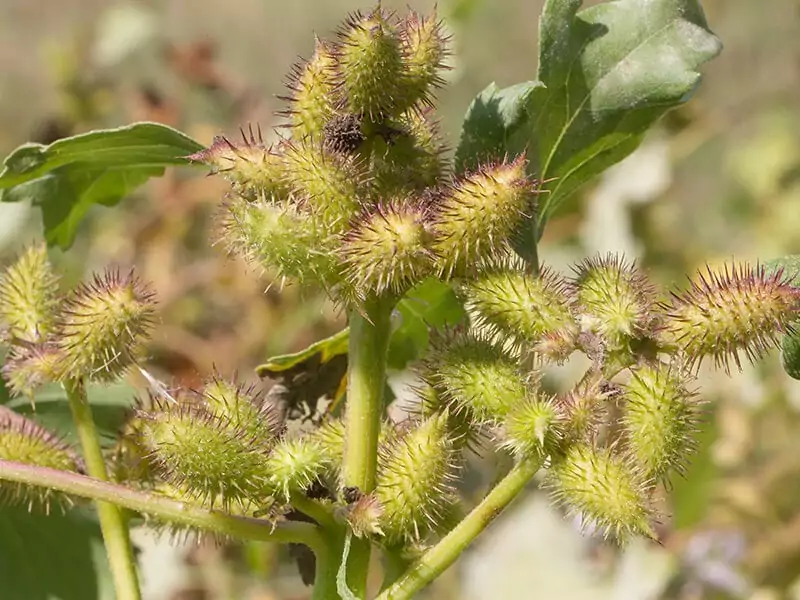
2. Xarel·lo
Xarel·lo is the name of a grape variety from Spain. It is a light-colored type of wine grape with a white, greenish appearance plus some brown dots. This species of grape is also a Spanish provenance that is cultivated mostly in Catalonia.
Xarel·lo is also one of the most common types used to produce a Spanish sparkling wine called Cava, a drink that goes well with Gouda cheese’s flavor, along with Parellada and Macabeo.
Xarel·lo wine is more fragrant and tastes stronger than wine made from the remaining two species.
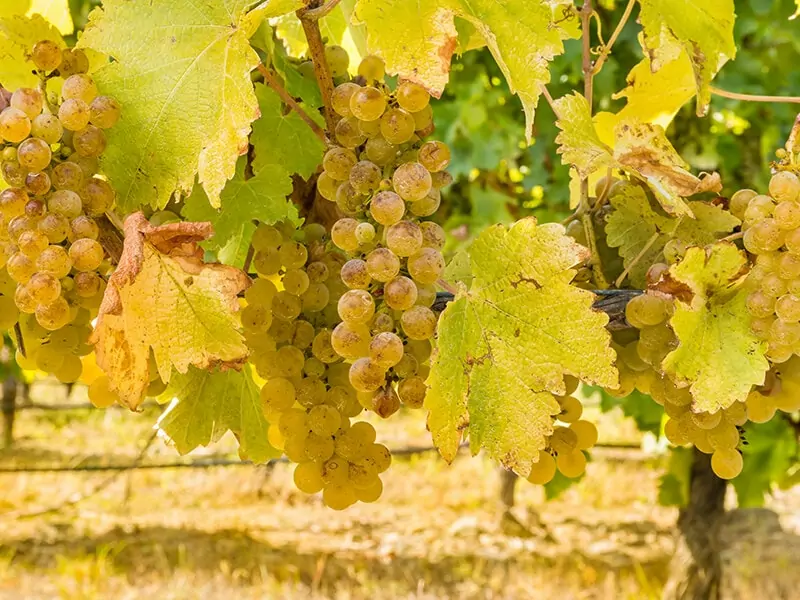
3. Xiangjiao (“Banana” in Chinese)
Finally, there is something familiar here, but in another language! In Chinese, banana is Xiangjiao. I believe that Xiangjiao is one of the most favorite and popular fruits in the world.
Xiangjiao is undoubtedly nutritious and famous for its richness of mineral potassium. It does not only grow in any specific season of the year; it is available year-round. Unlike several other fruits, Xiangjiao keeps ripening after being plucked.
This fruit is super delicious and can be used as an ingredient for many dishes and beverages. To name a few desserts featuring bananas, there are smoothies, muffins, cookies, cakes, crepes, etc. But be careful! Xiangjiao may cause allergic reactions in certain individuals with visible symptoms like itchiness.
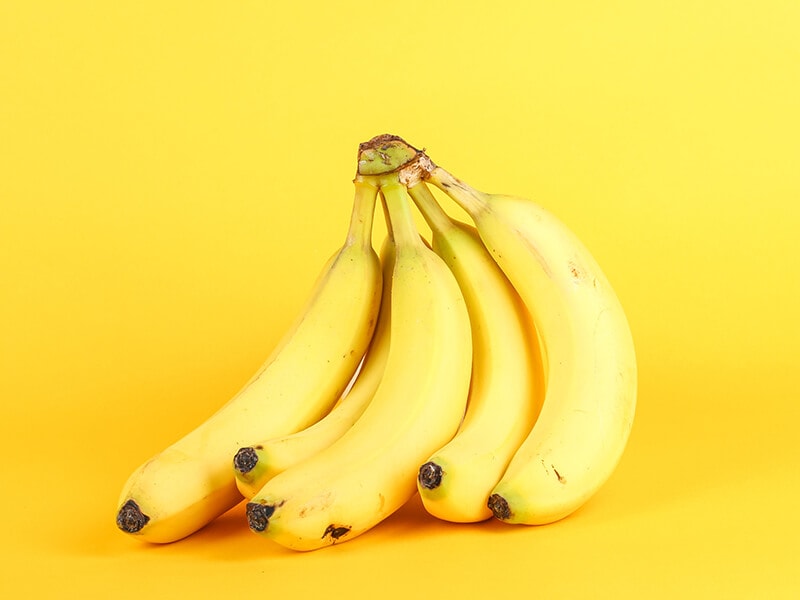
4. Xigua
Technically speaking, Xigua can also fall under the category of food starting with the letter “W” because xigua is just another name for watermelon that is grown mainly in Africa. However, it is pretty similar to any other species of watermelon in the world without many significant differences.
This fruit, which belongs to the same family as cucumber and pumpkin, is a delightful treat that is high in nutritional value. It is a local delicacy in the United States. Surprisingly, Xigua also means “watermelon” in Chinese.
Xigua is a refreshing fruit that contains more than 90 percent of water, thereby can surely help you stay hydrated in hot weather. It is also a representative kind of food around the globe when summer comes every year.
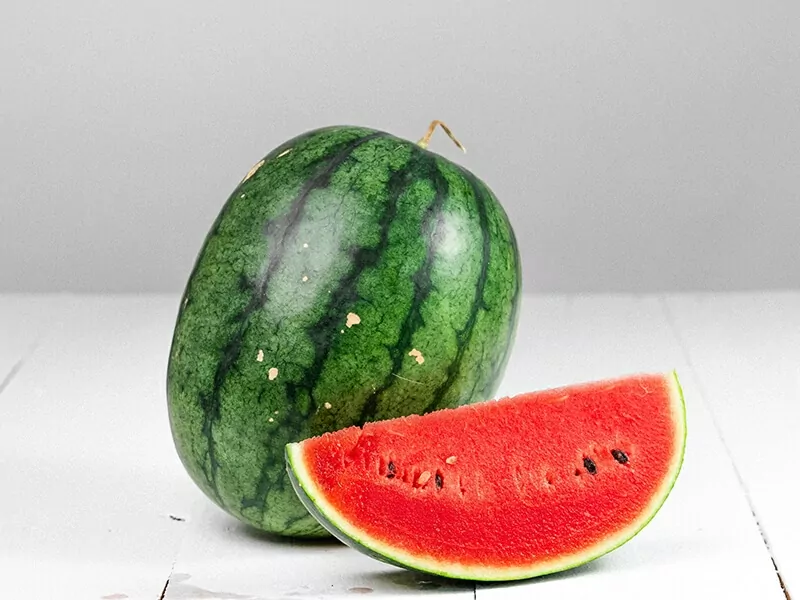
5. Ximenia Caffra
Ximenia Caffra, or the sour plum, is a member of the Olacaceae family and is native to tropical areas, which are southeast Africa, Kenya, Tanzania, Uganda and Zimbabwe. Its taste is usually sour with a dry finish and contains a lot of potassium.
Ximenia Caffra begins green and ripens to orange or red, with a significant percentage of tannins. Not only can they be eaten raw, but also be cooked for treats, jellies, and jams. Ximenia Caffra is also known as Mtundakula, Suurpruim, and Amatu Nduluka.
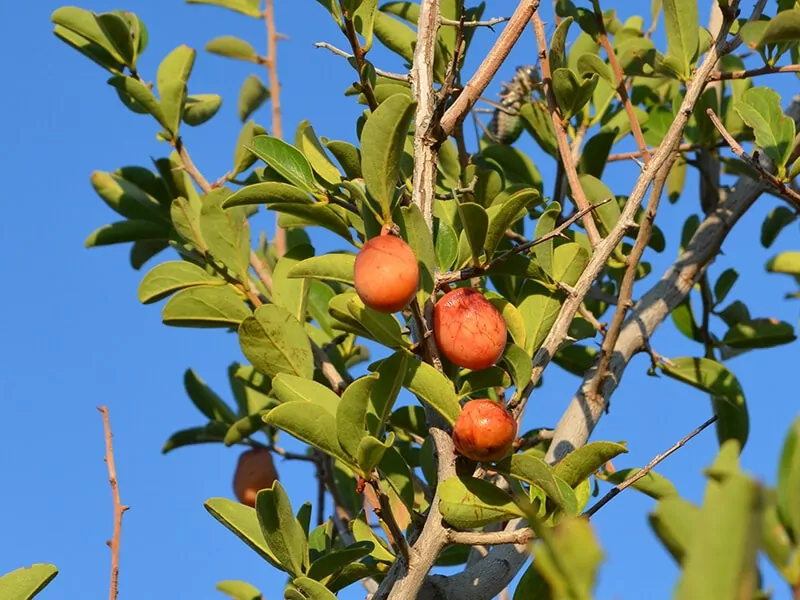
6. Xinomavro
Xinomavro is another grape species that are mainly found in the hilly regions of Macedonia, which is centered in the North of Greece.
Xinomavro is regarded as an outstanding type of grape for winemaking. Wine made from this is incredibly popular in Greece and is usually served as an accompanying dish to gyro, another staple Greek dish. If you have ever tasted wine here, it is probably made from Xinomavro grapes!
The name Xinomavro is a mixture between the terms Xino and Mavro, which indicates “sour” for Xino and “black” for Mavro. Furthermore, these grapes have high acidity and strong polyphenols so you will definitely love its wine’s aftertaste.
Is it true that Xinomavro grape wine is the most famous wine in Greece? Take a look at this video and find out!
7. Xing Zi (“Apricot” in Chinese)
Xing Zi, which is “Apricot” in Chinese, is a fruit of the Rosaceae family. Some other fruits from this family are cherries, peaches and plums. Xing Zi is grown in temperate climates throughout the globe, particularly in the Mediterranean.
Xing Zi may be eaten raw or cooked. A popular dish featuring Xing Zi is apricot couscous, a fantastic companion to Moroccan dishes. Xing Zi can be preserved by canning or drying. The fruit is also extensively used to make jam, pies and flavor wines.
Considered to be a healthy and nutrition-packed fruit, Xing Zi is very rich in natural sugar, vitamin A and iron. Except for Antarctica, it is currently grown on every continent.
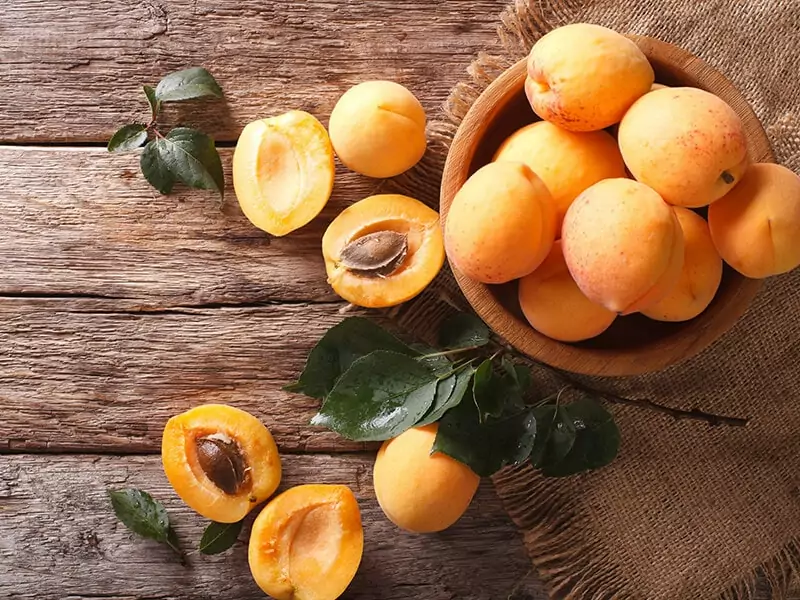
Discover a beautiful recipe for a mouth-watering dessert from Xing Zi! Watch this video:
8. Xoài (“Mango” in Vietnamese)
Xoài means “mango” in Vietnamese. It is a famous tropical fruit from Asia. In Vietnam, it is cultivated in the majority of southern provinces. People from the Cao Lãnh area in Đồng Tháp province of this country produce the best Xoài.
Xoài needs a lot of strong sunlight while it is maturing. The more sunlight the developing fruit gets, the richer its flavor and the brighter its skin. This food with “X” as the starter is classified into various varieties, which are known locally as Xoài Cát, Xoài Tượng, Xoài Voi in Vietnam.
In Thailand, this fruit is also popular because it appears in a well-known street food called Khaoniao Mamuang (Mango Sticky Rice), which includes sticky rice with Xoài in slices and some coconut milk. Have you ever tasted this Thai dish? You should totally try it someday!
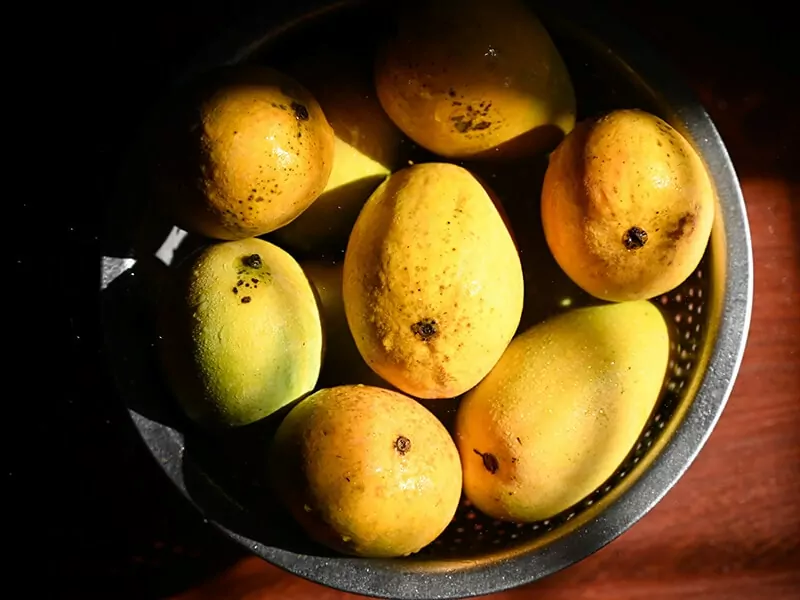
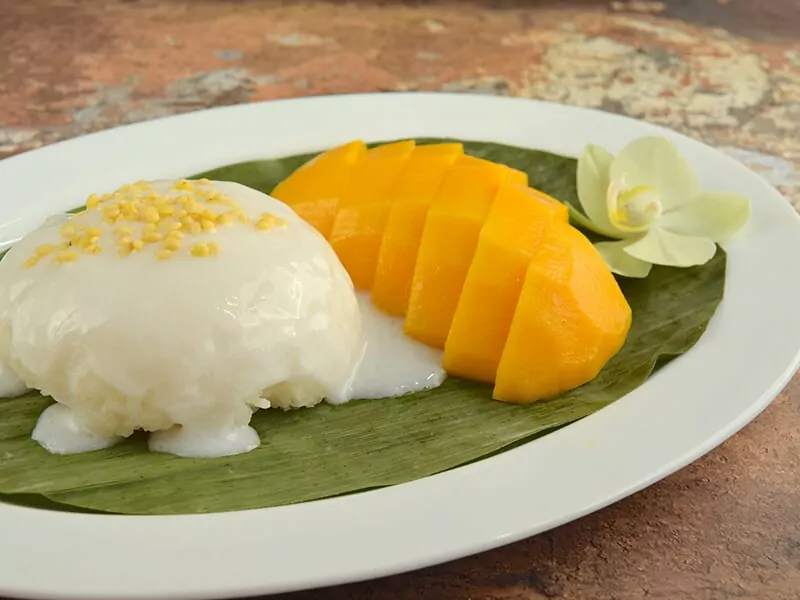
9. Xoay (“Velvet Tamarind” in Vietnamese)
In Vietnamese, Xoay means “Velvet Tamarind”. This is a species of legume in the Fabaceae family. It is mainly found in Vietnam, Cambodia, Malaysia, Laos, Thailand and many West African countries.
Xoay tree is a tropical, fruit-bearing tree, which grows in dense forests. The fruit is small, typically grape-sized and edible with brown or black hard inedible shells. It contains a high amount of fiber, so it can help reduce cholesterol levels in your blood.
Moreover, the bark and leaves of Xoay tree have medicinal properties and are used against diverse diseases. The pulp of this fruit may be eaten raw soaked in water and consumed as a beverage.
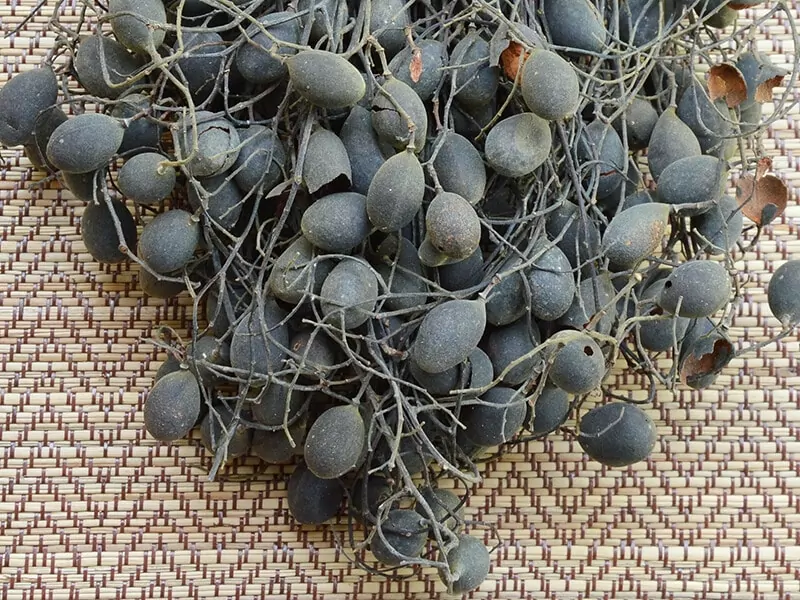
Want to taste the juice made from Xoay? Let’s learn how they make juice from this incredible fruit!
10. Xoconostle
Xoconostle is a sour prickly pear cultivar that belongs to the Opuntia matudae family. Xoconostle grows at the tips of cactus paddles, often in clusters of up to a dozen on a single paddle. It is pear-shaped and tapering to a point.
The fruit is 5 to 7 centimeters in length and 4 to 5 centimeters in diameter. It has light green skin with a confused tint and a faint pink blush when ripe.
The word “Xococ” in Xoconostle means “sour” in the old Nahuatl language. Xoconostle is one of the few sources of betalain, a phytonutrient that contributes to the burgundy color of the seeds and the crimson blush on the fruit.
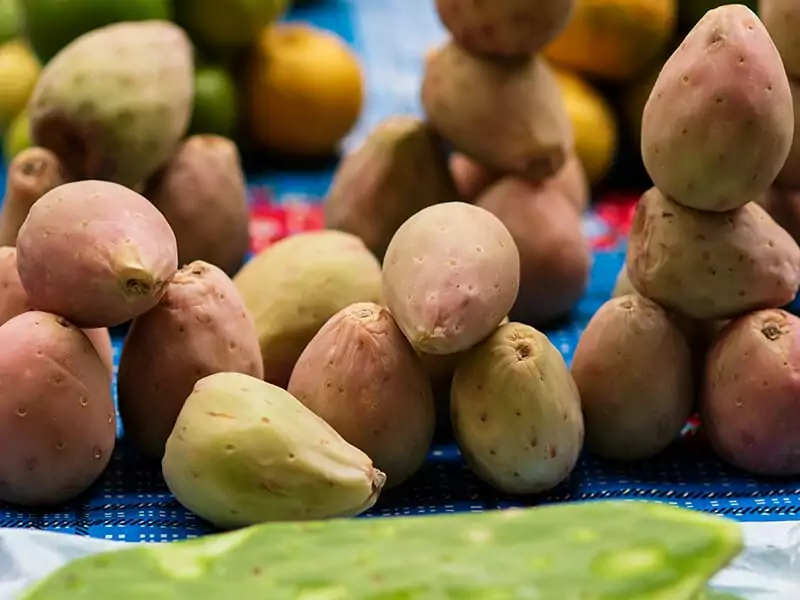
11. Xylocarpus Granatum
I guess you are wondering why on earth something that sounds like a spell from Harry Potter appears in this list, right? Just kidding, Xylocarpus Granatum is the name of a cannonball-shaped fruit, particularly found in Malaysia and some parts of Asia.
The fruit is huge with 10 to 25 centimeters in diameter, which looks like a black-brown bowling ball. It matures quickly, with just one fruit per inflorescence. A ripe Xylocarpus Granatum may weigh up to 3 kilograms!
The word “Granatum” in Xylocarpus Granatum implies “filled with seeds.” A single fruit normally contains 8 to 10 seeds, or sometimes up to 20 seeds. When the fruit is ripe enough, it splits open and falls from the tree, smashes, and the seeds float away.
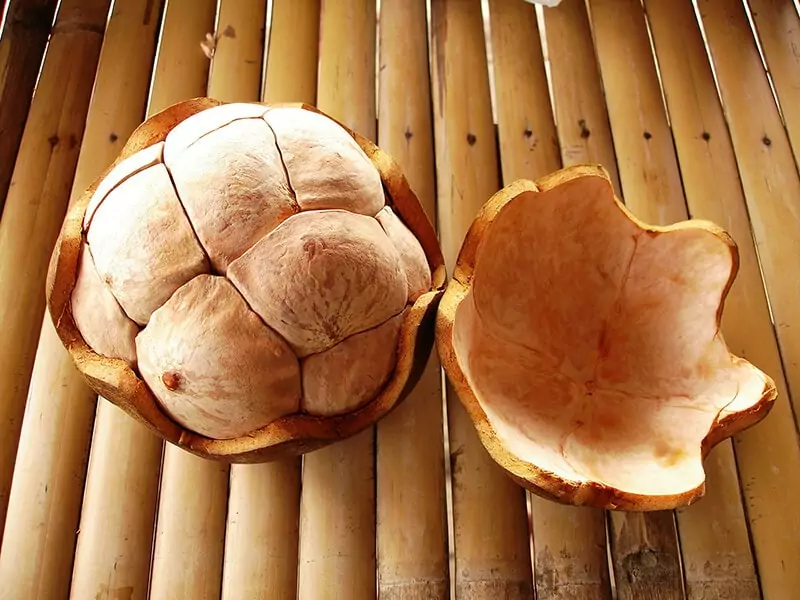
4 Healthy Vegetables With X As A Starter
Let’s learn about the 4 types of veggies that start with X! This time, I think some of them are very familiar to you.
12. Xà Lách
Xà Lách is a kind of vegetable in Vietnam. It can be referred to as “Lettuce” in English.
Xà Lách is a cabbage-like vegetable that belongs to the daisy family. Lactuca Sativa is the scientific name for this vegetable. It is a European native that is now primarily grown in some tropical countries. Its stem is often round and straight.
Xà Lách is very easy to eat and absorb, even for those children who usually do not like to eat vegetables. It is mainly used to make salads with other vegetables or eaten raw after being rinsed in water.
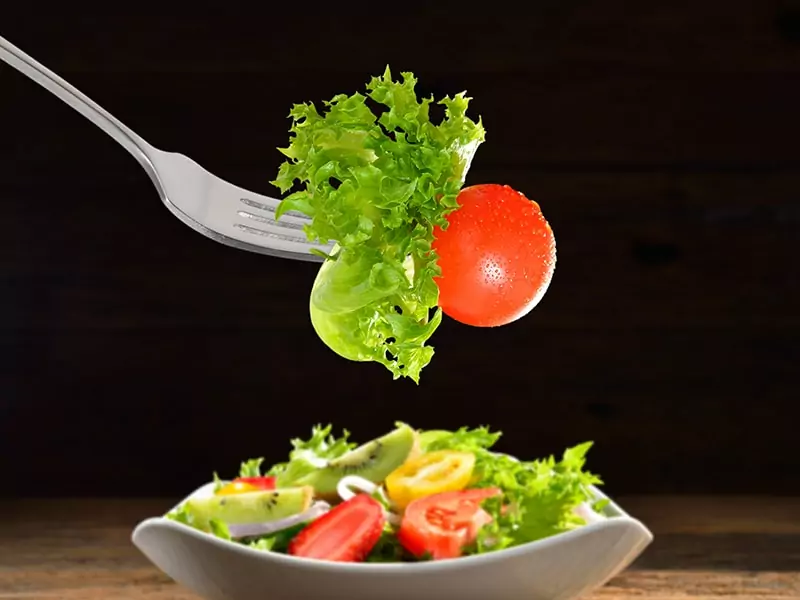
13. Xerophyte
Xerophyte is a species of plant that has adapted to living in dry environmental conditions, such as a desert or an ice- or snow-covered location in the Alps or the Arctic.
Xerophyte is closely similar to cactus. Its structural traits and underlying chemical processes have been modified in diverse ways to preserve water, which is also frequent during dry seasons.
It might not seem that Xerophyte is a kind of vegetable, but in Mexico and South America, Xerophyte is consumed as veggies. Its pods can easily be found in vegetable markets. Furthermore, pineapple is also considered as a Xerophytic plant.
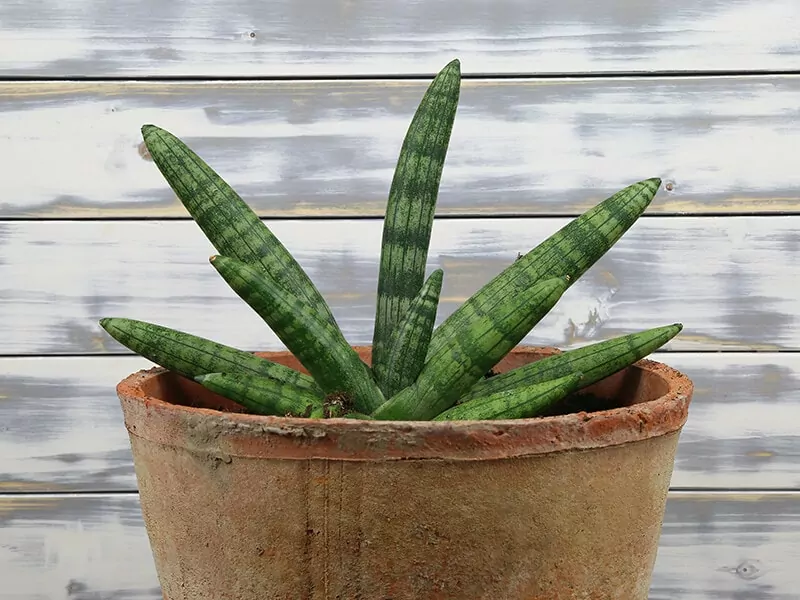
14. Xi Lan Hua (“Broccoli” in Chinese)
Have you ever wondered what “broccoli” is called in Chinese? It is by chance a word that starts with X! Xi Lan Hua is the name of “broccoli” in Chinese.
Unlike Xà Lách, or lettuce, Xi Lan Hua is one of the most hard-to-eat vegetables from the perspective of kids. Almost every child, including myself when I was little, does not like to eat Xi Lan Hua because of its taste and harshness.
However, Xi Lan Hua will taste better and be easier to eat when it is combined with other foods to make another dish, such as stir-fried broccoli with beef, or salads with various ingredients and tasty sauces.
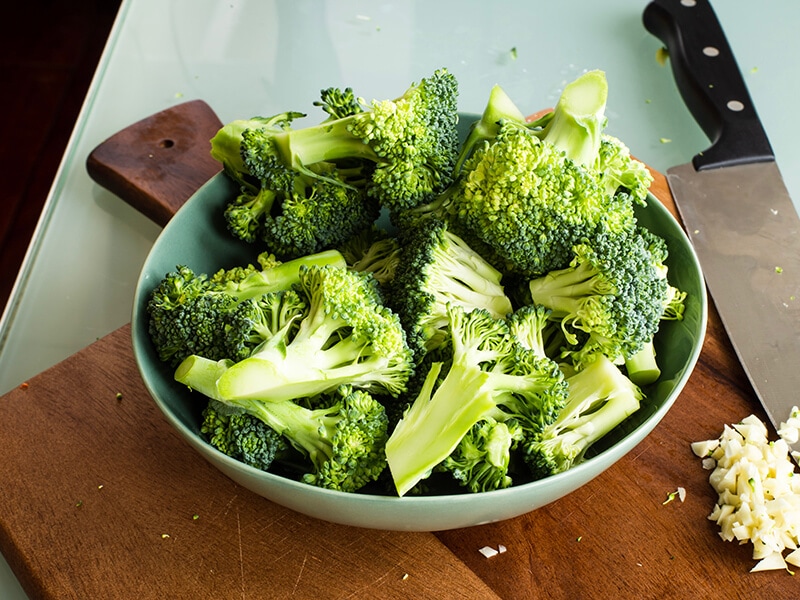
15. Xi Yang Cai (“Watercress” in Chinese)
Watercress is called in Mandarin Chinese as Xi Yang Cai, which literally means “Western Vegetable”.
If you want to ask why, then here is the answer! When a Chinese businessman visited Portugal in the 1930s, he took some watercress seeds back to his hometown in Guangzhou. Since it came from a western country, everyone called it a “western vegetable.”
Xi Yang Cai started to be more and more popular with Chinese people since then. Nowadays, it is often stir-fried with garlic or cooked in soups.
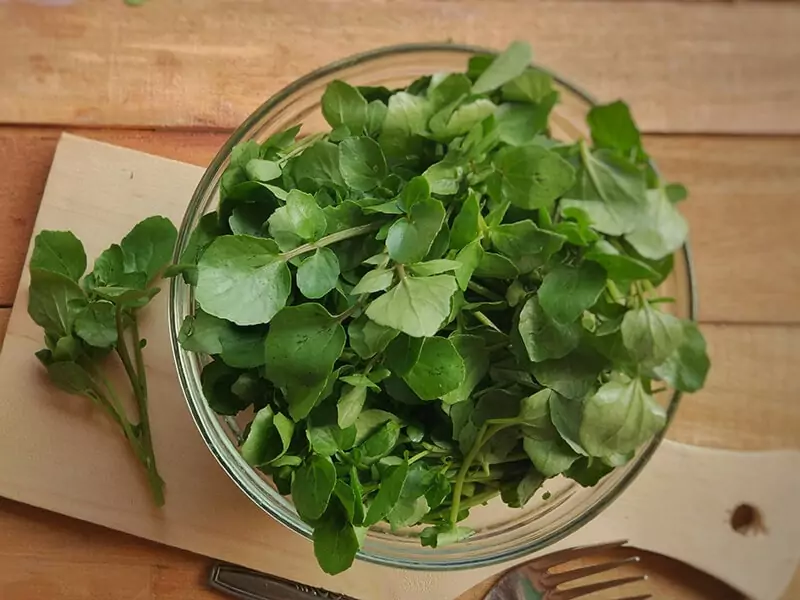
Making soup from Xi Yang Cai and pork ribs will be easier than ever after watching this tutorial video!
Are Those X-Something Fruits And Vegetables Enough For You To “Wow”?
There are not many fruits and vegetables that start with X, and most of the ones in the above list are from my experiences. They may seem strange to you, but they do exist and some are really delicious, too!
I hope that you enjoy reading these interesting facts and try to remember some of your favorites so that when you are playing quiz games, or when someone asks you about this, there will be at least some names from this list popping up in your head.
If you know any other kinds of fruits and vegetables that begin with X, feel free to share with me in the comment section. Have you ever met those species on the list? Also, let me know via the section below this post!

